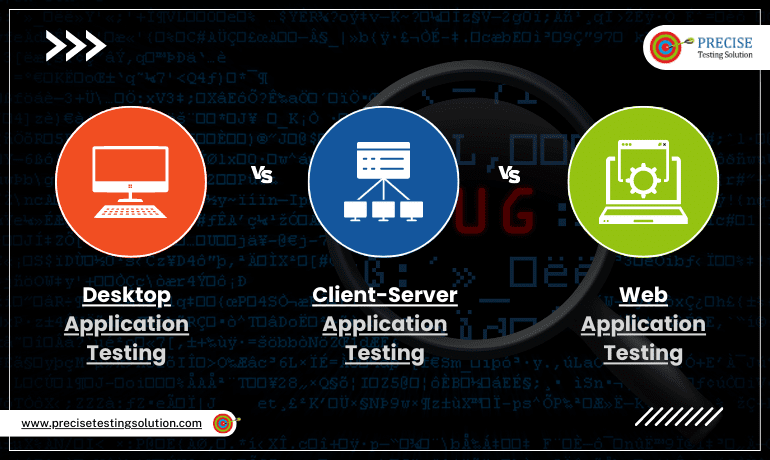Introduction of Desktop, Client-Server and Web Application Testing
In this blog post, we are going to discuss the parameter-based differences between the three types of software testing namely desktop, client-Server and Web Application Testing. But before getting into the difference between them, we will briefly know about what desktop, client server and web application testing is that are conducted on a piece of software before it gets released in the market to proceed this discussion further.
Concept of Desktop Application Testing
- The first type of software testing is the desktop application testing in which the full software is installed on the end-user system, and only one person may access it at a time.
- In general, it is carried out on computers, devices, and systems. We need to understand the operating system, database, and user interface in order to test the desktop application.
- The desktop application contains a complete study of the application, including its functionality, backend, database, and load. Hence, desktop application testing is also known as a stand-alone application testing.
Concept of Client Server Application Testing
- Another category of software testing is client server application testing which falls under the category of single-user application that runs on two or more computers and require networking expertise to run.
- Generally, while testing a client-server application, we will test the system’s graphical user interface on both the server and client platforms as well as its functionality, load, database, and client server communication.
- The client server application’s code structure has to be improved, and the end user needs to identify load and performance concerns. With the help of understanding about the requirements, the test engineers can obtain the test cases and test scenarios for testing client server applications.

Concept of Web Application Testing
- Web application testing is the process by which the test engineers test the application using various operating systems, browsers, and versions of the same browser.
- The test engineers must be familiar with the web application’s user interface in order to implement the testing of web-based applications.
- To perform web application testing, it’s also vital to have a solid understanding of a variety of technologies, including JavaScript, PHP and also debugging.
Desktop vs. Client Server vs. Web Application Testing – Differences
Following are the parameters which can be used to differentiate between desktop, client server & web application testing:
1. Test Requirements – Desktop application testing requires the use of at least one computer system or workstation, whereas in the case of client server application testing, it requires the use of at least one server for loading the application and one client machine or system and for web application testing, it requires the use of a web browser and internet connectivity on personal computers or laptops.
2. Test Execution – Desktop application testing can be carried out on a single computer or workstation, but client server application testing should be done on a 2-tier application and web application testing should be done on a 3-tier application.
3. Test Environments – The environment for stand-alone or desktop application testing is a user computer because these tests are platform-dependent; in contrast, the environments for client server application testing and web-based application testing are often the intranet and web browsers, respectively.
4. Test Parameters – When testing desktop or standalone applications, test engineers examine the factors such as performance, GUI, and memory leaks in the backend database. In contrast, when testing client server applications, they examine the factors such as functionality, performance, and GUI. Finally, when testing web applications, they examine the factors such as browser and OS compatibility, GUI testing, broken link testing, load, and stability.
Conclusion
Hence, from the above discussion, we can conclude to say that all these types of application testing are entirely different from each other and have various benefits and drawbacks as well. Nearly every test engineer works with applications such as Desktop/Stand-alone application, Client Server application, and Web Application. So, it is the responsibility of each and every test engineer to perform the above discussed testing types according to his/her needs.
For more information, visit our website at www.precisetestingsolution.com or call our office at 0120-368-3602. Also, you can send us an email at [email protected]
We look forward to helping you!
How to Identify Email Spoofing Attempts
What Is The History Of Spoofing Spoofing, in the
A Comprehensive Guide to Optimizing Your A/B Testing
What is A/B testing? Also known as split A/B


